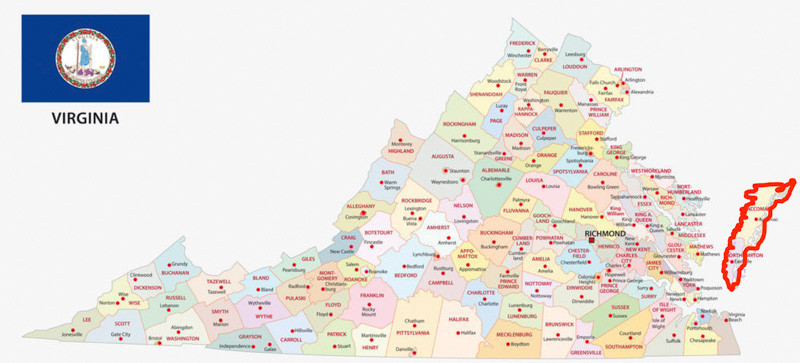About 25 percent of the plant species native to North America are at risk of extinction. You can help reverse this trend by planting great native plants in your garden.
Virginia is divided into seven main ecological regions: the Middle Atlantic Coastal Plain, the Southeastern Plains, the Piedmont, the Northern Piedmont, the Blue Ridge Mountains, the Ridge and Valley, and the Appalachian Plateau. Unique in topography, soil depth, pH, elevation, light, and hydrology, each region provides a rich variety of ecological habitats, supporting many native plant species.
The Middle Atlantic Coastal Plain is a region covering most of the coastal plain from the border of South Carolina and Georgia, northeast to southern New Jersey. This region tends to be flat and poorly drained, with dunes, beaches, and barrier islands along the coastline, usually with extensive wetlands behind them.
The Eastern Shore of Virginia consists of two counties (Accomack and Northampton) on the Atlantic coast detached from the mainland of the Commonwealth of Virginia in the United States. The terrain is overall very flat, ranging from sea level to just 50 feet (15 m) above sea level. It is characterized by sandy and deep soil. The weather in the area has temperate summers and winters, significantly affected by the Chesapeake Bay and the Atlantic Ocean.

Virginia's Eastern Shore is home to many species of trees, shrubs, and flowering plants. It can also support many non-native species which are beginning to make their way across the landscape. Regrettably, some of these exotic immigrants are invasive and are threatening the native flora and ecology of the state.
According to the U.S. Forest Service, Invasive species have contributed to the decline of 42% of U.S. endangered and threatened species, and 18% of U.S. endangered or threatened species. Invasive species compete directly with native species for moisture, sunlight, nutrients, and space. They displace and alter native plant communities, degrade wildlife habitat and water quality, and potentially lead to increased soil erosion.
The federal government has estimated that nearly 25 percent of the 20,000 plant species native to North America are at risk of extinction, many of these through habitat loss. You can help reverse this trend by planting great native plants in your garden.
A plant is considered native if it has occurred naturally in a particular region or ecosystem without human introduction. There are many benefits to growing native plants.
Here is a list of native annuals and perennials that are well-suited for plantings in Virginia's Eastern Shore gardens.
| Plant Type | Annuals, Perennials |
|---|---|
| Exposure | Full Sun, Partial Sun, Shade |
| Native Plants | Southeast, United States, Virginia |
Mirofoss, Shutterstock
| Plant Type | Annuals, Perennials |
|---|---|
| Exposure | Full Sun, Partial Sun, Shade |
| Native Plants | Southeast, United States, Virginia |
Create a membership account to save your garden designs and to view them on any device.
Becoming a contributing member of Gardenia is easy and can be done in just a few minutes. If you provide us with your name, email address and the payment of a modest $25 annual membership fee, you will become a full member, enabling you to design and save up to 25 of your garden design ideas.
Join now and start creating your dream garden!
Create a membership account to save your garden designs and to view them on any device.
Becoming a contributing member of Gardenia is easy and can be done in just a few minutes. If you provide us with your name, email address and the payment of a modest $25 annual membership fee, you will become a full member, enabling you to design and save up to 25 of your garden design ideas.
Join now and start creating your dream garden!